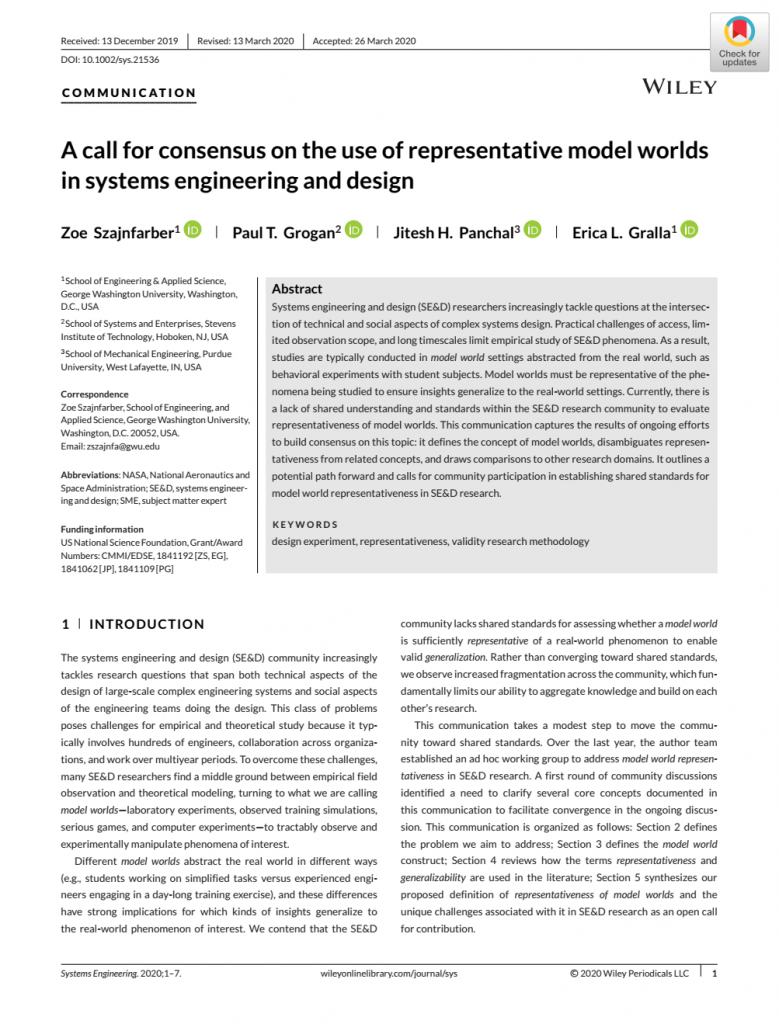A new communication co-authored by Zoe Szajnfarber, Paul Grogan, Jitesh Panchal, and Erica Gralla appears online for Systems Engineering.
A call for consensus on the use of representative model worlds in systems engineering and design
Systems engineering and design (SE&D) researchers increasingly tackle questions at the intersection of technical and social aspects of complex systems design. Practical challenges of access, limited observation scope, and long timescales limit empirical study of SE&D phenomena. As a result, studies are typically conducted in model world settings abstracted from the real world, such as behavioral experiments with student subjects. Model worlds must be representative of the phenomena being studied to ensure insights generalize to the real‐world settings. Currently, there is a lack of shared understanding and standards within the SE&D research community to evaluate representativeness of model worlds. This communication captures the results of ongoing efforts to build consensus on this topic: it defines the concept of model worlds, disambiguates representativeness from related concepts, and draws comparisons to other research domains. It outlines a potential path forward and calls for community participation in establishing shared standards for model world representativeness in SE&D research.

